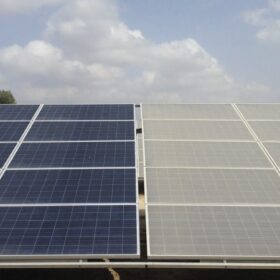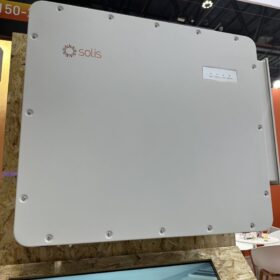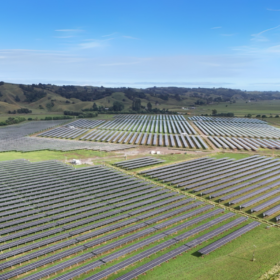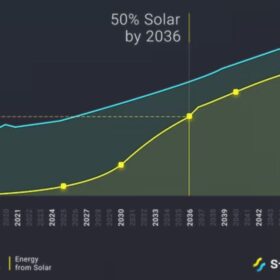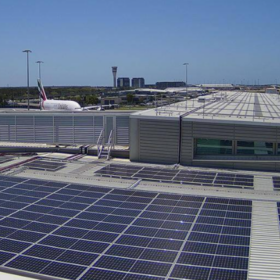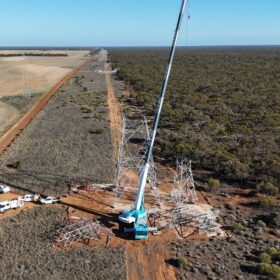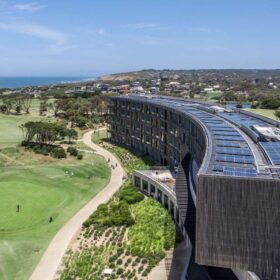Wind tunnel tests show spacing between panels is key to reduce soiling
Scientists have placed four PV panels in a 21-metre wind tunnel and run different tests regarding tilt angles, mounting height, spacing, and incoming flow direction. They found that when the spacing between panels exceeds twice the panel height, the mutual influence on dust deposition becomes negligible.
Central-West Orana REZ gets generation transfer capacity raised to 7.7 GW
The New South Wales infrastructure planner of renewable energy zones EnergyCo has formally updated the amount of renewable generation and storage that can connect to the Central-West Orana renewable energy zone transmission network from 5.8 GW to 7.7 GW.
Remote solar-array powers EV charger 1,600 kilometres north of Perth
West Australian energy company Powerhouse has completed the install of a 60 kVA, off-grid solar array in the state’s far north, to power a remote electric vehicle charger as part of the 7,000 kilometre long WAEV Network project.
CEFC invests $100 million into energy efficient apartment developments
The Clean Energy Finance Corporation has invested $100 million in the property development strategy of France-headquartered investment firm AXA IM Alts, which aims to embed sustainability into their Australian builds.
Solis releases three-phase string C&I inverters with fuseless design
The Chinese inverter manufacturer said its new inverters have an MPPT current of up to 54 A and support more than a 150% DC/AC ratio. The new products also feature a maximum efficiency of 98.8% and a European efficiency rate of 98.3%.
Lodestone powers up 69 GWh agrivoltaic solar farm in New Zealand’s north
Lodestone Energy has flicked the ‘on’ switch to it’s utility-scale agrivoltaic solar array on the North Island of New Zealand, making it the first in the country to connect directly to the national grid.
New tool tips solar to supply 50% of global energy demand by 2035
Solar energy will satisfy more than 50% of global energy demand within a decade according to a new modelling tool that also predicts solar costs will continue falling by 10% a year.
Brisbane Airport net zero milestone includes 10 MW of onsite solar
Brisbane Airport has announced it’s 100% powered by renewable energy from 10 MW of onsite solar generation sourced via 18,000 solar panels installed across the facility, plus a recent purchase of 100% renewable energy from state-owned generator, Stanwell.
Costs climb for NSW-SA grid interconnector
Transgrid has confirmed the cost of the New South Wales section of Project EnergyConnect has climbed to $3.6 billion, well above the $1.82 billion price tag that was originally approved.
RACV adds virtual power plant services to suite of membership offerings
RACV has added virtual power plant (VPP) services to its catalogue of membership offerings and follows integration of the FCAS-friendly PowerSync platform with solar and battery installations at RACVs Torquay and Inverloch resorts in Victoria.
